Banavasi, Endogenous Tourism Project
Rural tourism in India: India’s heart lies in its villages. Every rural community is steeped in folklore and indigenous craft. The traditional way of life will greatly enrich the visitor’s experience. Ministry of Tourism, Government of India and the United Nations Development Programme (UNDP) in India have partnered the promotion of 36 such rural locations, under the Endogenous Tourism Project/Rural Tourism Scheme. The initiative aims to enable local communities introduce visitors to their art and craft, cultural and natural heritage.
History: Existing since 4000 BC, the period of Mahabharata, Banavasi was known as ‘Vanavasaka’. Greek geographer Ptomlemy mentioned Banavasi as ‘Banousi’ in his famous book in 1st century A.D. It was called ‘Jayanthipura’ or ‘Vaijayanthipura’ during the Kadamba period in the early 4th century A.D.
Banavasi is the oldest town in the Karnataka state. Huen Tsang the Chinese traveler-monk who was in India between 630-644 C.E, visited Konkanapura called Konkanapulo (referred in Chinese scripts) or Banavasi.
In 2006, a 5th century copper coin was discovered here with an inscription in the Kannada script, one of the oldest such coins ever discovered. The Directorate of Archaeology and Museums said that the coin’s inscription in archaic Kannada proves beyond doubt that Banavasi had a mint in the 5th century. The town once was the capital of the Kadamba rulers, an ancient royal dynasty of Karnataka. They established themselves there in A.D. 345 and ruled South India for at least two centuries. Banavasi also features in Hindu mythology across the yugas (eras). It is considered to be as old as Kashi Varanasi or Benares which is amongst the most holy of Hindu towns. Buddhism and Jainism have also spread their roots here. During the reign of Samrat Ashok, Banavasi was a learning centre for Buddhist monks. An ASI site at Gudnapura village nearby shows evidence of Jainism being encouraged by the royalty.
Location: Banavasi lies deep in the rain forests of Western Ghats with the Varada river flowing around it on three sides. It is located 374 km from Bangalore. The nearest railway station is 70 km away in Haveri & also Talaguppa. Sirsi is the nearest city about 23 km, Lodging is provided by some home stays and a tourist complex.
Accommodation: At Banavasi, tourists can stay at the newly built Village Tourism Complex. There are eleven double rooms available with attached bathrooms set around a square courtyard at the edge of Banavasi with the River Varada on one side and the Pampa Vana on the other.All the rooms have twin beds and can easily accommodate a small group.
Tariff: Rs. 1,499 per person per day
The package includes:
- Visit to Madhukeshwara temple
- In and around Banavasi by walk
- Accommodation with Breakfast, Lunch, & Dinner
We would love to plan a Happy Trip for you
Please call us on +919820976655/+919821232094 or email us at contact@simplyoffbeat.com
It’s an eco-tourism destination which is rustic and rural. While tourism has run rampant and largely uncontrolled in the Western Ghats in recent years, here we are trying to create a simple sustainable model that benefits the community while leaving minimal impact on environment. We try to provide tourists with a real cultural experience while enjoying nature. There is no TV in rooms as we encourage you to be in outdoors enjoying various activities like bird watching, Nature walk, Heritage walk etc. We depend on the Grid for Electricity and don’t have generators.
Cuisine: Come to Banavasi for its varied cuisine. “Khanavalis” or small eateries in Banavasi serve up hot, delicious food with a warm smile. There are several breads made of rice, jowar and corn as well as rice served with a variety of sweet, sour, pungent and spicy curries and sauces. Accompanying the meal is a wide range of fresh powders and chutneys made of lentils, chillies, tamarind, oil cake.
A book of recipes using pineapple is available and you could even be there for the monthly pineapple mela which is held on the first weekend of every month. This is when a women’s group in Banavasi come together to cook up a feast using pineapple as the main ingredient.
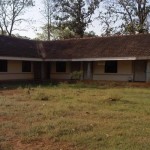
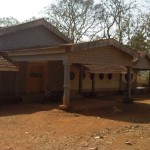
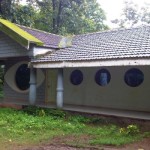
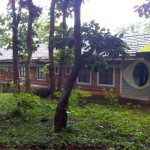
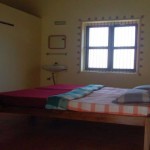
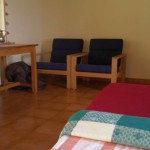
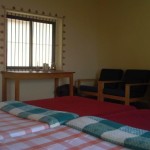
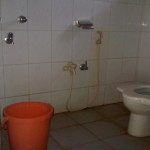
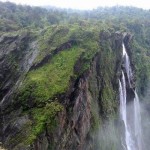
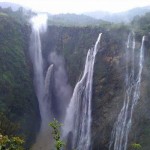
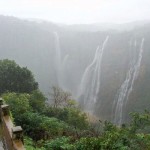
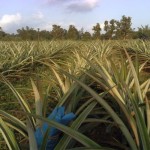
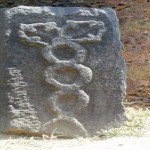
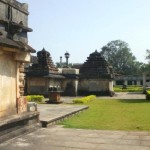
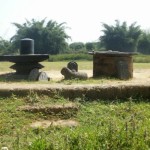
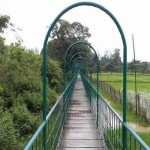
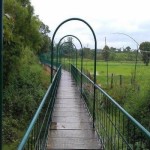
People & Traditions:
Art and Crafts: The Gudigar community of Banavasi are versatile craftspersons. Art is in their veins and has flowed as a tradition from one generation to the next. They carve, sculpt, paint and mould using different mediums. They excel when it comes to sandal and teak wood carving. Beside Gudigars, there are many skilled craftspersons like carpenters, potters, rangoli artists, pith coronet carver, yakshagana mask makers, etc. who excel in their craft. The craft shop in the Tourist Complex gives you an introduction to these craftspersons and their crafts. A walk around Banavasi will help you to understand the crafts better and if you have the time, learn a bit of the craft itself. ‘Varnaloka’ is an art gallery by the gifted artisan Shreepad Purohit where contemporary life in Banavasi is portrayed using sculpture from various materials. There is also a bag-making unit set up by a group of women. They make the bags out of Illikal silk saris and embellish the fabric with mirrors, embroidery and tassels.
Fairs and Festivals:
Rath Festival: The Rath (vehicle of main deity) festival is a big event celebrated with a wish to get the blessings of God for peace and prosperity. This celebration provides an opportunity for the village community to unite and thus enhances goodwill among its members. It is held in March every year.
Mahashivaratri Festival: The birthday of Lord Shiva is celebrated in a big way at Madhukeshwara temple. During Mahashvaratri, devotees from different parts of the state gather in Banavasi, leading to a festive like mood throughout the village. Mahavshivatri usually comes in the month of February.
Lakshadeepotsava: A wonderful scene gets created at Madhukeshwara temple, when thousands of small diyas (lamps) lit up by village people in the temple premises during Lakshadeepotsava. This festival usually celebrated during winter i,e in the month of November or December.
Kadambotsava: Banavasi was the cultural capital of Karnataka in addition to being the political capital, several centuries ago. The eminent poet Pampa in his poems has described the beauty and grandness of ‘Madhumahotsava’, a spring festival celebrated during the Kadamba reign. With Kadambotsava, an annual event organised by the state government, Banavasi regains its former glory as a cultural capital. Renowned classical musicians, yakshagana artistes, drama troupes, folk dancers and eminent literary personalities assemble for Kadambotsava and make it a huge cultural fete. This is organised usually in the month of December.
Places of Tourist Attraction:
Madhukeshwara Temple
Banavasi has grown around the Lord Madhukeshwara temple which was built in the 9th century by the Kadamba dynasty. This architectural marvel has seen many modifications in later years as every dynasty which ruled Banavasi contributed its share to its present shape. This is evident visually as one goes from the ornate sculptures as one enters to the sombre simplicity of the innermost sanctum sanctorum. Some splendid monolithic stone works like the stone couch and the triloka mantapa depicting heaven, earth and the nether world are some of the highlights of the temple.
There is a belief that visiting this temple is equivalent to visiting all of Hinduism’s main temples. Around the main temple are idols depicting Lord Shiva and Lord Vishnu from all their main abodes including Varanasi, Tirupati, Rameshwaram, etc. There is a striking half idol of Ganesha and it is believed that the other half is in Varanasi. There is also an unusual idol of Lord Narasimha with a peaceful face.
There is a five-hooded Naga sculpture dating back to the 2nd century. It has an inscription in Prakrit (the old language) which states that Princess Sivaskanda Nagashri had this installed when she had a Vihara and tank constructed at the site.
Around the village..
Several other temples dot the village and its surroundings giving one a good history lesson of Karnataka. There is one temple in Banavasi with the idol facing west to show that God can be worshipped regardless of the rules that Hinduism has evolved over the years. In most Hindu temples, the idol faces east.
The River Varada flows at the edge of the village and its banks are the ideal place to relax with a book. Near the Tourist Complex, there is the Pampa Vana, a grove dedicated to the famous poet Pampa. It is believed that Kalidasa drew his inspiration for the “Meghaduta” from Banavasi. Sit at the Pampa Vana and who knows, you could become a writer yourself!
A walk (or cycle ride) around Banavasi will also show you the ancient wall of the city and the surrounding moat dated to be more than a thousand years old. The ASI is setting up an exhibition of the findings of their excavations in and around Banavasi which will give the visitor an understanding of the evolution of the history of the region.
Surrounding Banavasi..
After spending a day wandering around Banavasi, explore the region around. Itineraries have been prepared for a 75km radius around Banavasi. Options include visiting ancient temples that take you through the history of Karnataka, visiting sacred groves where the bio-diversity has been preserved over the years, waterfalls such as those at Jog (one of the highest in Asia), nature spots such as Honnemarudu, visiting a plantation and having lunch with the hosts or the Gudavi bird sanctuary which hosts thousands of birds each year.
The temples at Ikkeri, Keladi, Balligavi, Thalagunda, Kotipura, Bedsagaon and Sahasralinga offer oases of peace to the religious and non-religious alike. Each of these temples is unique in architecture and built across several centuries in styles that are unique to the dynasty that built them. Each temple also has its own interesting story of how it came to be built and how the main deity came to be there. Our trained guides will help you to understand the history as well as the mythology of each temple.
The region is blessed with plenty of rainfall as well as rivers that meander across the terrain. When these rivers descend from the Western Ghats, they result in some spectacular and scenic waterfalls. The most famous of these is the Jog falls, one of the highest in Asia. There are also the Unchalli and the Magodu waterfalls where you can have a picnic lunch and listen to the soothing sounds of water. Honnemarudu is situated on the backwaters of the Sharavati dam where an adventure academy has come. This makes for a good day trip from Banavasi.
Visit the sacred groves at Yelkundli where a natural forest has been preserved with its bio-diversity intact giving you a good picture of the splendour of the Western Ghats.
Mr Rehman Sheikh and his family are happy to host you on their plantation where pineapples, bananas, arecanut, pepper, paddy, etc. are grown. Mr Sheikh is known as the “Pineapple King”. A visit to his plantation will help you understand why. Returning from the plantation, stop by at Mr S M Hegde’s house. He has a room full of Ganesha idols in all shapes, colours, sizes and made of varying materials. Finally, stop off at the Gudnapur Lake to watch a beautiful sunset. Gudnapur also has the Rani Mahal, a fifth century structure still being explored by the ASI. A beautiful statue of Mahavira inside gives you a glimpse of the religious tolerance in those days.
Many of these places are as yet unknown to most tourists. So what you can experience is our great natural and cultural heritage in total peace.
One Reply to “Banavasi Tourism”